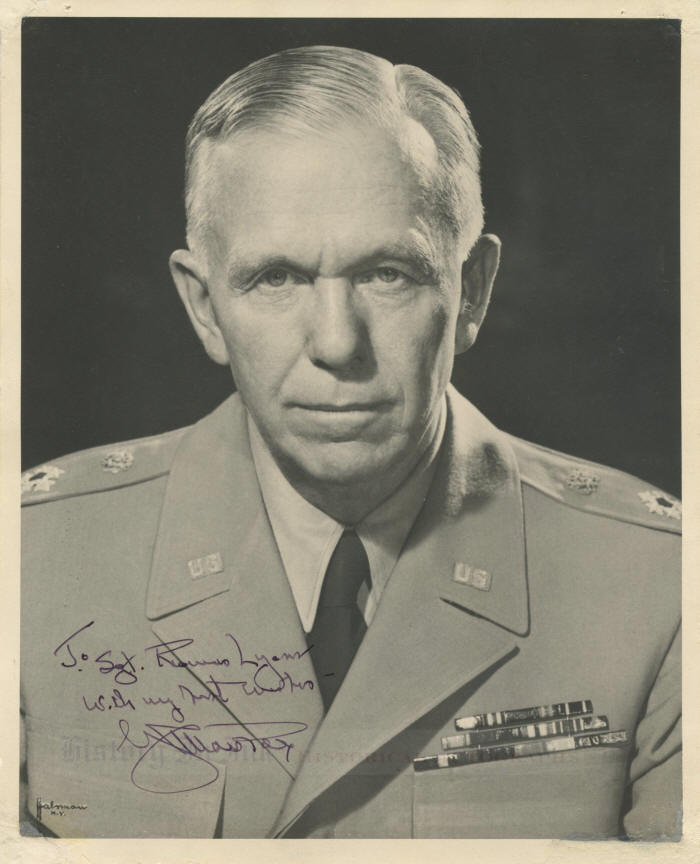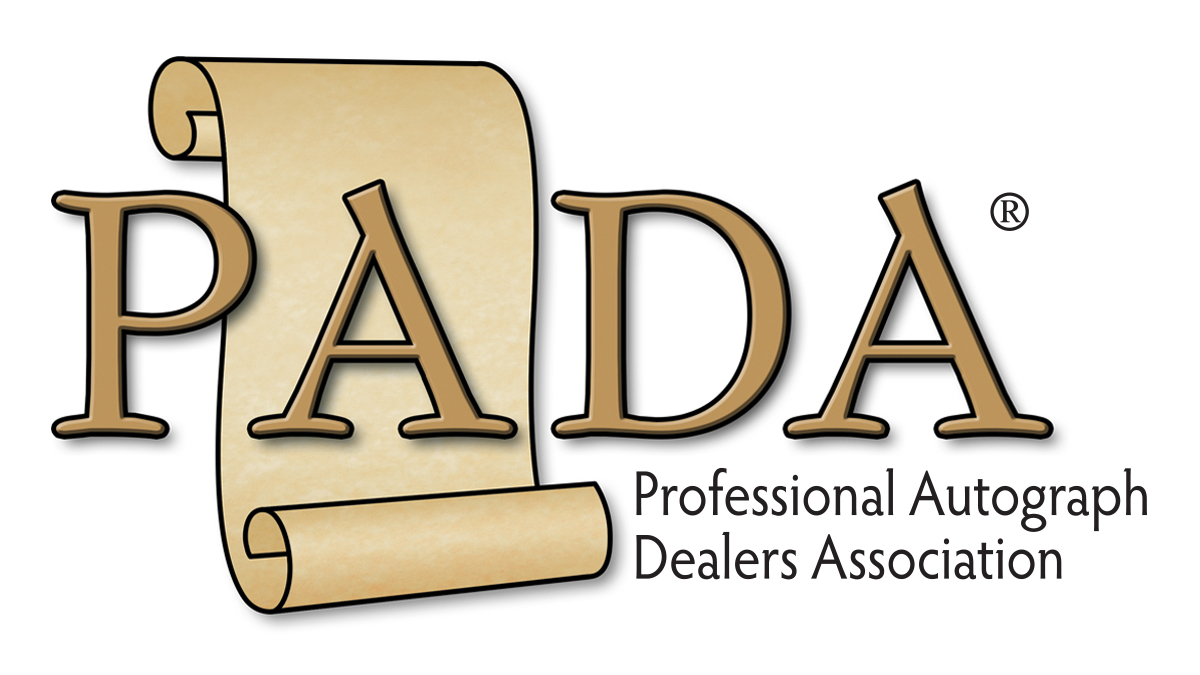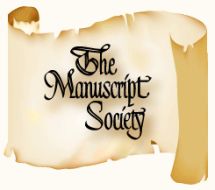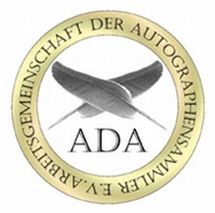2410111
George C. Marshall
Scroll down to see images of the item below the description
Mezmerizing signed portrait of Marshall, as a five-star general, by famed photographer Philippe Halsman
George Catlett Marshall, 1880–1959. General of the Army and World War II Army Chief of Staff; Secretary of State; Secretary of Defense. 8” x 10” black-and-white portrait photograph inscribed and signed To Sgt. Thomas Lyons / with my best wishes / G C Marshall.
Marshall is generally acknowledged to be among the greatest figures of the 20th Century. President Harry S. Truman, who greatly admired Marshall and appointed him both Secretary of State and later Secretary of Defense, said that Marshall was “the greatest military man this country has ever produced—or any other country for that matter.” After meeting with him in early 1947, Truman noted on his appointment sheet, “The more I see and talk with him, the more certain I am he’s the great one of the age.”
This mezmerizing portrait of Marshall is by famed New York photographer Philippe Halsman, whose imprint appears in the lower left corner. The image dates from 1945. Marshall appears in his uniform as a General of the Army, with the interlocking circles of five stars on his shoulders. His piercing eyes look directly into the camera, his countenance serious.
Marshall’s aura captivated Dean Acheson, who was Marshall’s successor as Secretary of State. “The moment General Marshall entered a room, everyone in it felt his presence,” Acheson wrote. “It was a striking and communicated force. His figure conveyed intensity, which his voice, low, staccato, and incisive, reinforced. It compelled respect. It spread a sense of authority and of calm. There was no military glamor about him and nothing of the martinet. Yet to all of use he was always ‘General Marshall.’” Dean Acheson, Homage to General Marshall, The Reporter, Nov. 26, 1959, at 25.
Marshall was the first of only five Army generals to hold the five-star rank, which was revived during World War II. The others, following in succession and thus seniority of rank, were Douglas MacArthur, Dwight D. Eisenhower, Henry H. “Hap” Arnold, and Omar N. Bradley.
Marshall’s importance in 20th Century history cannot be underestimated. A premier soldier turned diplomat, Marshall gave his name to the United States’ unprecedented program of economic and military aid for the recovery of Europe after World War II. The program, which Marshall announced in his commencement address at Harvard University in 1947, became forever known as the Marshall Plan.
Marshall served as Army Chief of Staff from 1939 to 1945, spanning United States involvement in World War II. He urged military readiness before the Japanese attack on Pearl Harbor in 1941. After the United States entered the war, he was responsible for building, supplying, and deploying an army of more than 8,000,000 soldiers. He conceived the central strategy for all Allied operations in Europe, was a member of the policy committee that supervised the American and British atomic studies, selected Dwight D. Eisenhower as Supreme Commander of the Allied Expeditionary Force in Europe, and designed Operation Overlord, the 1944 Allied invasion of Normandy. Time named Marshall its Man of the Year in 1944. The same year he was made a five-star general.
After the war, Marshall turned to diplomacy. He had been associated with diplomatic events while Chief of Staff, participating in the conference on the Atlantic Charter and in meetings at Casablanca, Quebec, Cairo-Teheran, Yalta, and Potsdam. Beginning in late 1945, he represented President Truman on a special mission to China, then torn by civil war. In January 1947, following the resignation of James F. Byrnes, Truman appointed Marshall Secretary of State. Some six months later, in the commencement address at Harvard University, Marshall announced the European Recovery Plan, which became known as the Marshall Plan. He was Time’s Man of the Year again in 1948, and he won the Nobel Peace Price in 1953.
Marshall served as Secretary of State for two years. He retired from government service to become president of the American Red Cross. He came out of retirement when Truman appointed him Secretary of Defense in 1950, a position that he held for a year during the Korean war.
While this is a Halsman image, it is not an original Halsman print. The back of the photo bears the stamp of the U.S. Army Signal Corps, showing that the Signal Corps produced the print from a Halsman negative or perhaps a copy negative. We are offering the photo for its autograph value, not for any value that would otherwise be associated with an original Halsman print.
Marshall has inscribed and signed the photo in black fountain pen. The photo is in good to fine condition overall. There is professional restoration of paper loss at the corners, including negligible loss of the image emulsion, and two pinholes remain in the blank upper margin. None of the paper loss affected Marshall’s beautiful, bold inscription and signature, and all of the repairs could be matted out if the photo were framed. The photo would indeed be magnificent framed.
Unframed. Click here to ask us about custom framing this piece.
Click here to see other World War II and American History items.








